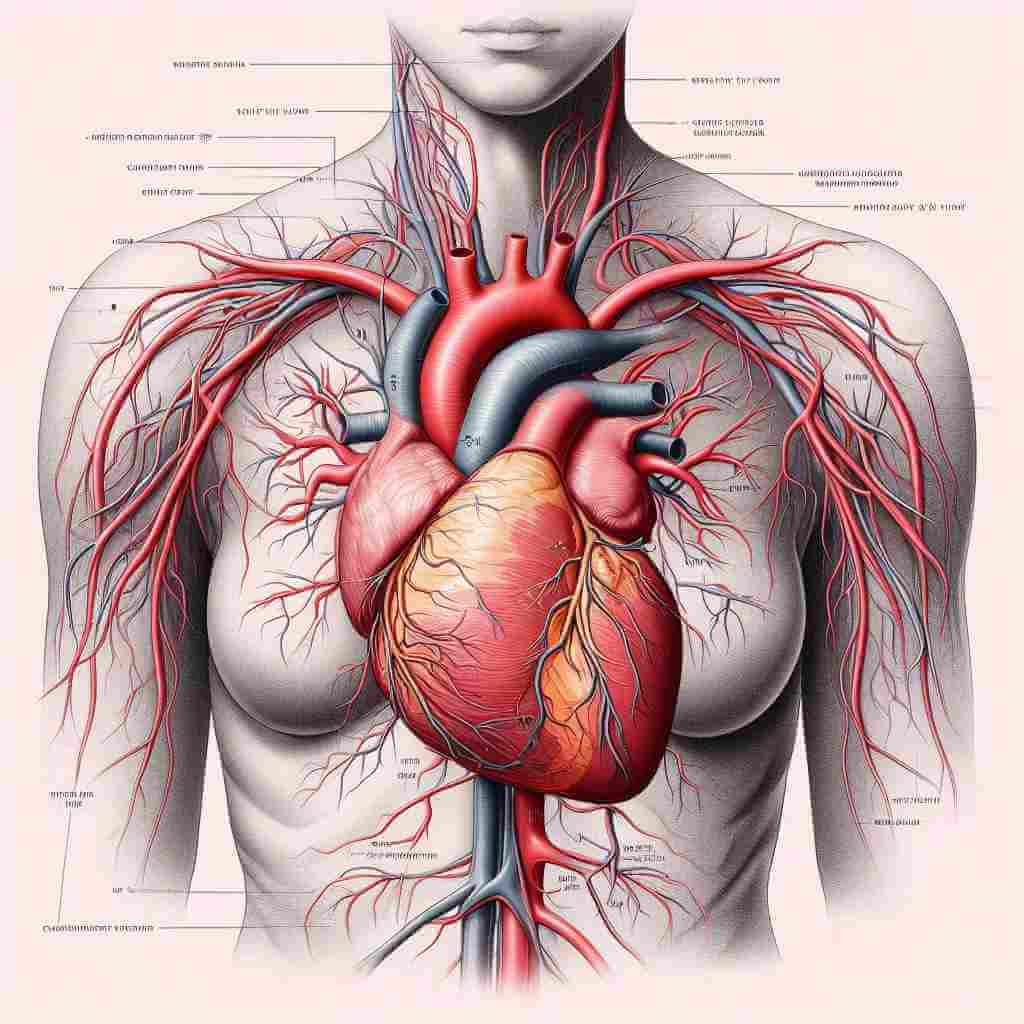Quick Overview
The great cardiac vein (GCV), also known as the left coronary vein, is one of the three main coronary veins that drains blood from the heart.
It is responsible for draining the anterior wall of the left ventricle and the anterior interventricular septum. The GCV originates at the apex of the heart and runs along the anterior interventricular groove. It empties into the coronary sinus, which then drains into the right atrium.

Anatomy of Great Cardiac Vein
The GCV is a relatively long and wide vein. It is located on the anterior surface of the heart, in the interventricular groove. It runs from the apex of the heart to the coronary sinus.
| Vein | Description |
| Origin | At the apex of the heart |
| Branches | Anterior interventricular vein, Left marginal vein, Diagonal veins |
| Venous drainage | Venous drainage of the heart |
| Function | Collect deoxygenated blood from the myocardium |
Location:
This crucial vein is situated on the heart’s anterior surface, primarily within the anterior interventricular sulcus, which is a groove that demarcates the left and right ventricles. It often travels in close proximity to the Left Anterior Descending (LAD) artery.
Function:
The primary function of the Great Cardiac Vein is to collect deoxygenated blood from the myocardium, the heart’s muscular wall. It serves as a conduit for transporting this blood away from the cardiac muscle, ensuring efficient drainage and the removal of waste products.
Branches
The GCV has a number of branches, which are;
- Anterior interventricular vein: This branch drains blood from the anterior interventricular septum.
- Left marginal vein: This branch drains blood from the left margin of the heart.
- Diagonal veins: These branches drain blood from the anterior wall of the left ventricle.
Venous Drainage:
The Great Cardiac Vein plays a pivotal role in the venous drainage of the heart. It collects deoxygenated blood from various regions of the myocardium and ultimately conveys this blood to the Coronary Sinus.
Clinical Importance:
Great Cardiac Vein holds critical clinical importance. It serves as a target for cardiac interventions such as coronary artery bypass grafting (CABG) and cardiac catheterization..
Conditions Associated with the GCV
A number of conditions can affect the GCV, which are;
- Myocardial infarction (heart attack): A myocardial infarction is a blockage in one of the coronary arteries that supply blood to the heart. This can lead to damage or death of heart muscle.
- Coronary artery disease (CAD): CAD is a condition in which the coronary arteries become narrowed or blocked. This can reduce blood flow to the heart and lead to a myocardial infarction.
- Cardiomyopathy: Cardiomyopathy is a condition that affects the heart muscle. This can lead to weakening of the heart muscle and reduced blood flow to the heart.
- Congenital heart disease: Congenital heart disease is a condition that is present at birth. Some types of congenital heart disease can affect the coronary arteries or the heart muscle.
Prevention of GCV Disorders
There are a number of things you can do to prevent great cardiac vein disorders, including:
- Maintaining a healthy weight
- Eating a healthy diet
- Exercising regularly
- Quitting smoking
- Managing high blood pressure and cholesterol levels
- Controlling diabetes
Question
1. What is the Great Cardiac Vein?
The Great Cardiac Vein, also known as the Anterior Interventricular Vein, is a major cardiac vein in the heart that plays a crucial role in collecting deoxygenated blood from the myocardium (heart muscle) and facilitating its drainage.
2. Great Cardiac Vein runs with what artery?
The Great Cardiac Vein often runs alongside the Left Anterior Descending (LAD) Artery, which is a major coronary artery supplying the heart.
3. The Great Cardiac Vein and the Middle Cardiac Vein lead to what vessel?
Both the Great Cardiac Vein and the Middle Cardiac Vein ultimately lead to the Coronary Sinus, which is a larger vein located on the posterior surface of the heart. The Coronary Sinus serves as a conduit for deoxygenated blood to return to the right atrium of the heart.
4. Great Cardiac Vein definition?
The Great Cardiac Vein is a significant cardiac vein that traverses the heart’s anterior surface within the anterior interventricular sulcus. Its primary role is to collect deoxygenated blood from the heart’s muscular walls and transport it for eventual drainage.
5. The Great Cardiac Vein runs alongside the?
The Great Cardiac Vein often runs alongside the Left Anterior Descending (LAD) Artery, which is a major coronary artery supplying the heart. This close proximity facilitates the efficient collection and drainage of deoxygenated blood from the myocardium.
